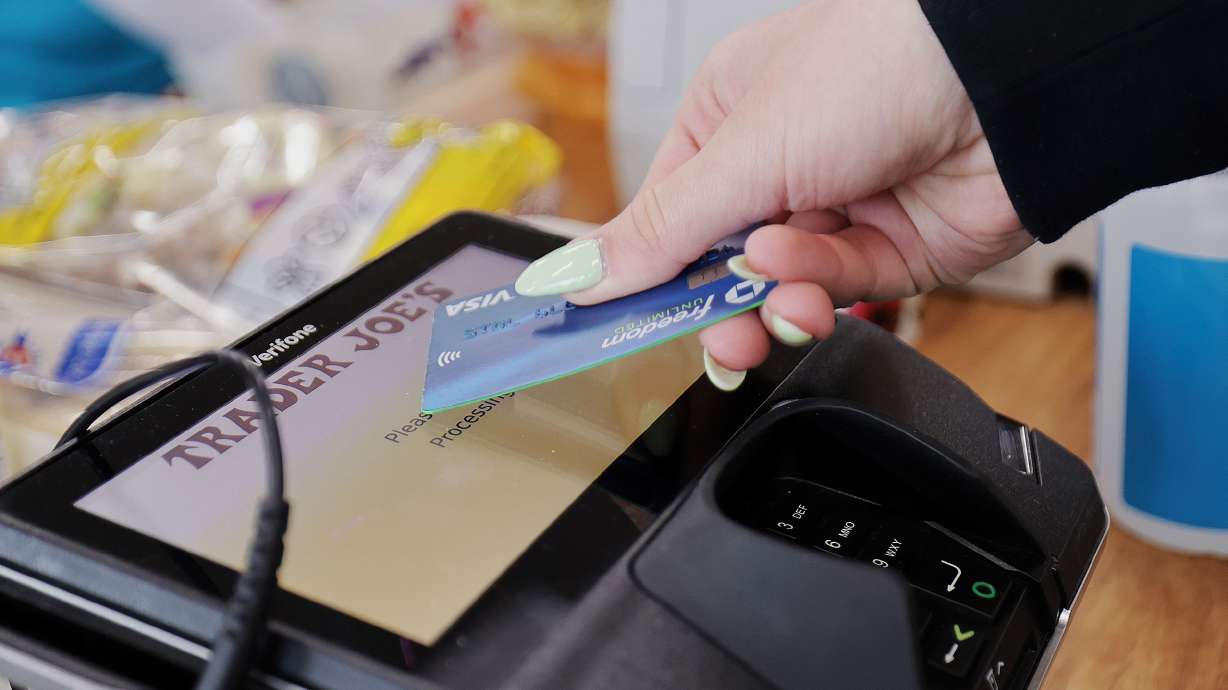Estimated read time: 3-4 minutes
This archived news story is available only for your personal, non-commercial use. Information in the story may be outdated or superseded by additional information. Reading or replaying the story in its archived form does not constitute a republication of the story.
SALT LAKE CITY — U.S. consumer credit card debt rose nearly 5% in the second quarter of 2023, pushing the collective debt total passed the $1 trillion mark for the first time ever, according to a report released Tuesday by the New York Federal Reserve Bank.
While the balance is enormous, economists note the delinquency rate has remained low but also warned that those with outstanding student loan debt may face challenges as a long-running payment hiatus, spurred by the COVID-19 pandemic, is due to run out in October.
"Credit card balances saw brisk growth in the second quarter," said Joelle Scally, regional economic principal within the Household and Public Policy Research Division at the New York Fed, in a press statement. "And while delinquency rates have edged up, they appear to have normalized to pre-pandemic levels."
Overall U.S. household debt rose at a much smaller rate than credit card debt, growing by $16 billion, .1%, in the second quarter of 2023 to $17.06 trillion.
The collective debt of U.S. credit card holders saw a precipitous drop during the pandemic, declining from $927 billion in the fourth quarter of 2019 to $770 billion in the first quarter of 2021, according to an analysis by LendingTree. But that debt balance has been on the rise since then. In a ranking of states by debt per card holder, Utah is No. 20 on the list with an average of $7,489.
A LendingTree report released last month also noted the average annual interest rate for all current cards stands at 20.86%, a record, and the average rate for new credit card offers is even higher, averaging 24.24% across the country.
A Tuesday posting on the New York Fed's "Liberty Street Economics" blog notes that the expanding U.S. credit card debt figure is being driven by individual usage as well as a growing number of new credit card holders.
The blog post's authors note that credit cards are the most prevalent form of household debt in the U.S. and continue to become even more widespread, with 70 million more credit card accounts open now than there were in 2019, before the pandemic. Overall, 69% of Americans had a credit card account in the second quarter of 2023, up from 65% in December of 2019 and only 59% in December of 2013.
LendingTree chief credit analyst Matt Schulz said that those facing bigger monthly credit card payments who will also have to reengage with student loan repayment plans later this year could find themselves facing some economic distress. According to the new report, collective outstanding U.S. student loan debt stands at $1.57 trillion.
"The resumption of student loan payments will be a huge test for many cardholders, shrinking the amount they have to devote to paying off card debt and leaving some people simply unable to make minimum payments at all," Schulz told CNBC.
In their Liberty Street blog, New York Fed researchers were mostly positive in their analysis of the rising debt balance, noting most U.S. consumers had successfully navigated the economic turbulence of the pandemic and are well positioned in the current economy.
"Despite the many headwinds American consumers have faced over the last year — higher interest rates, post-pandemic inflationary pressures, and the recent banking failures — there is little evidence of widespread financial distress for consumers," researchers wrote. "American consumers have so far withstood the economic difficulties of the pandemic and post-pandemic periods with resilience."









